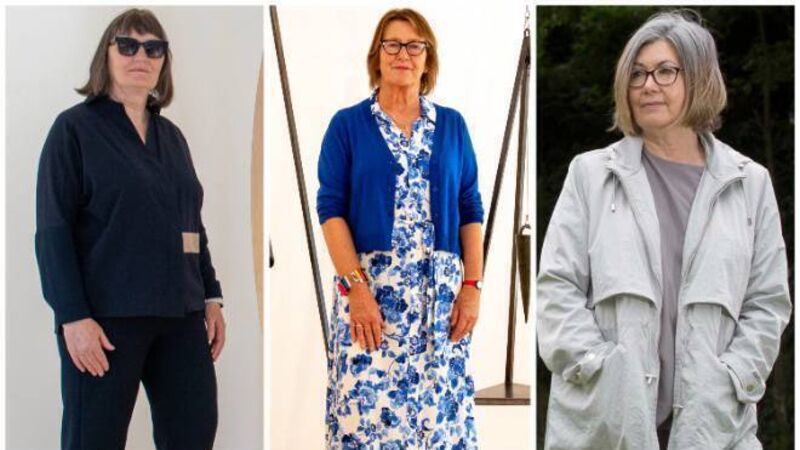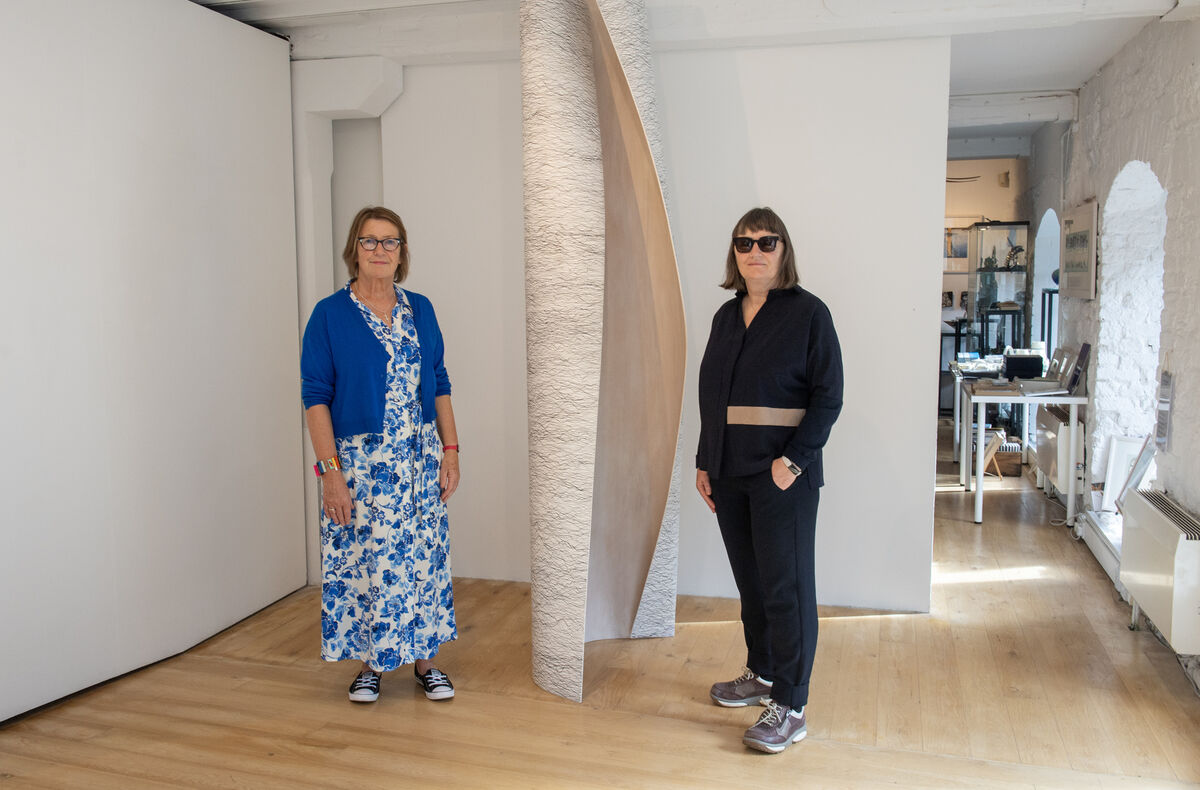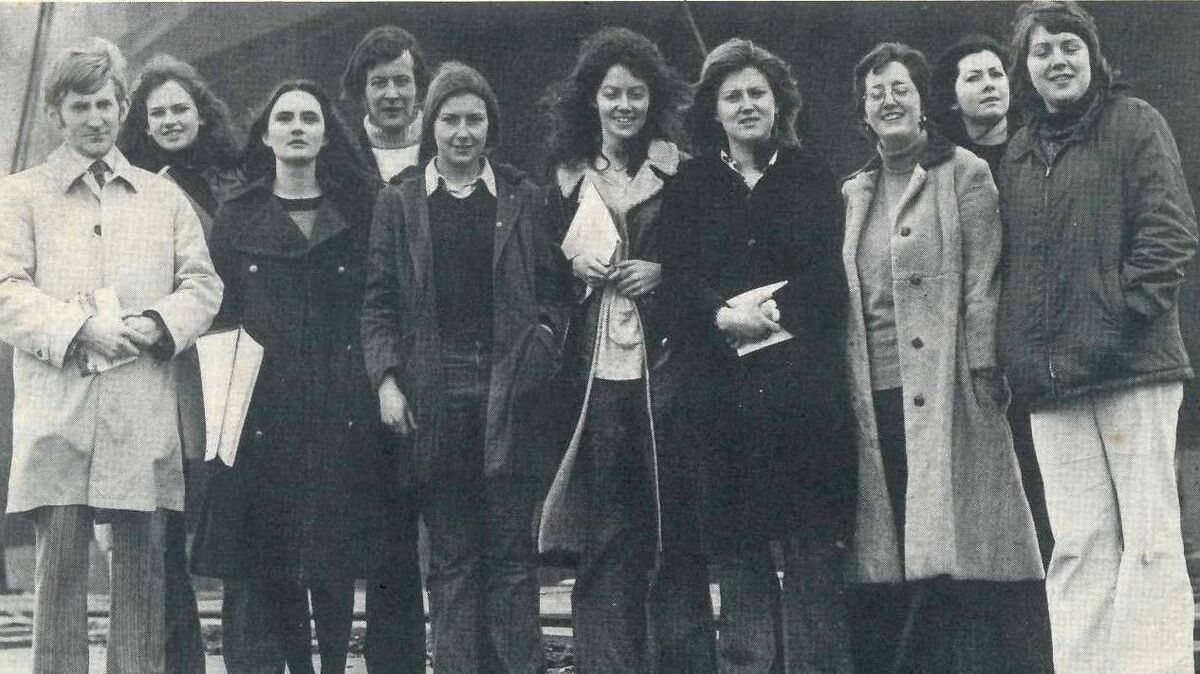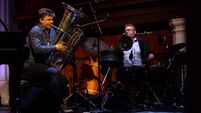Crawford veterans: 'We had books on the history of art that had no women'

Some of the 1970s Cork arts graduates exhibiting at the Lavit Gallery
Established by the Cork Arts Society in 1963, the Lavit Gallery has played a crucial role in promoting new and emerging artists. An early initiative was the Student of the Year Award, which in recent times has been conferred on those graduating from MTU Crawford College of Art & Design. Originally, however, it was presented to students of promise at any level in the college.
As part of its 60th anniversary celebrations, the Lavit Gallery presents Taking Form, an exhibition of work by three Student of the Year Award winners in the 1970s. Vivienne Roche, Eilis O’Connell and Maud Cotter are all members of Aosdána, and exhibit internationally. All three work in various media, but are best-known for their sculpture, and particularly for their work in metal.
Vivienne Roche won the Student of the Year Award in 1973. A native of Cork city, she remembers being barely seventeen when she first attended the Crawford School of Art, which was then based on Emmet Place.
It was a time when women had finally begun to claim their place in the arts, a world that had hitherto been very much male-dominated. Roche believes the change can be attributed, in part at least, to the introduction of free education. “There was a huge influx of students the year I started,” she says. “There were at least fifty in 1st Year, and there were as many girls as there were boys.”
Roche had grown up in Cork, but found it exciting to be based in the city centre. “We’d go all over town looking for materials,” she says. “Hammond Lane in Blackpool was a favourite; there was a metal yard where we’d take a pushcart to get scraps.”
The students’ interest in metal was greatly encouraged by John Burke, who became Head of Sculpture when Roche was in 2nd Year. Burke had also studied at the Crawford, and won the Student of the Year Award when he graduated in 1967.
“John set up a proper welding course at the Tech on Sharman Crawford Street,” says Roche. “We all did it, boys and girls. There was no difference. We learned how to work with metal as a material, and that’s been a big influence on everything I’ve done since.”
Equally influential was the American artist and educator Katherine Boucher Beug. “Katherine taught us Josef Albers’ colour theory. That gave me great confidence, personally. We’d use spray paint intended for cars on our sculptures. In those days, you could get every colour under the sun if you went around the motor shops in town.”
Roche has included her very first metal sculpture in the Taking Form exhibition, a work in steel she presented to her parents when she was still a student. On leaving the Crawford, she spent another year studying at the School of the Museum of Fine Arts in Boston, graduating in 1975.

Maud Cotter’s original ambition was to be a social worker. “But I couldn’t afford to go to university,” says the Wexford-born artist. “So actually, art was my second choice. But I was only at the Crawford for two weeks before I realised I’d make a good mistake, because this was where I belonged. I felt it was completely the right environment for me.”
Like Roche, she remembers John Burke and Katherine Boucher Beug as being inspirational teachers. “John brought us on a tour of the Verolme dockyard in Cobh, and it was extraordinary, you know; he just gave us such a sense of the power of steel. And Katherine taught us a Bauhaus drawing course as well as the Josef Albers course on colour. Both were extraordinary. We were uniquely privileged to have this education.”
Some of the other teachers she remembers are “Ken Lynch, who was a superb ceramicist, and the drawing teacher John O’Leary; he was a big influence. Ian Bibby, an English sculptor, came on board at one point. He was very dynamic as well.”
There was a great work ethic at the college. “We wouldn’t go home in the evening,” says Cotter. “We’d stay in until the college closed at 9pm. Even at lunchtime, we didn’t want to leave the college. So one person would be designated to go out and get sandwiches for everybody.”
Cotter was conscious of being part of a new wave of female artists. “It was an almost totally male concept of art in the world we came into at that time. We had books on the history of art that had no women in them. And then we were going into an unknown environment where it was almost totally about men.”
Cotter won the Student of the Year Award in 1974. “I was only in 2nd Year. I was nineteen. I went off to America for three months, and that was mind-bogglingly fantastic for me. I’d never been in another country. I think I got £900 as my award, and the flights to America were £600. I loved the extraordinary scale of the work I saw there, the ambition, and just the whole power of the work in terms of aesthetics. I mean, it changed my life, that whole trip.”
Cotter spent six years at the Crawford. “There was no expectation that we would have careers as artists when we graduated,” she says. “Nothing as arrogant as that. We just worked because the work required that it be made.
I was very fortunate in that I had my first exhibition at the Crawford Art Gallery. There was a good response to that show, and I never looked back.”

Eilís O’Connell grew up in Bishopstown, and remembers catching the No 8 bus into town to attend classes. She spent six years at the Crawford, along with a year studying in Boston. “I went to America for three summers in a row, on a J1 visa. The last time, someone suggested I apply for a scholarship to Massachusetts College of Art, and when I got that, I stayed on. I was really impressed by the land art in America, the whole scale of the work and the notion of putting it outside, which wasn’t really happening here at the time.”
On her return, O’Connell spent another two years at the Crawford, winning the Student of the Year Award in 1977. “I was already showing work at the Exhibition of Living Art in Dublin when I was a student,” she says. “And when I finished art school, I had a solo exhibition at the Ivernia Theatre in Cork. I was taken on by the Hendrix Gallery in Dublin on the strength of that. I remember going up on the train to meet them, with my work under my arm.”
O’Connell was conscious of how women were asserting themselves in society at that time. “I’d read Germaine Greer when I was 17,” she says. “And feminism made perfect sense to me.” At that time, the only real career option open to art graduates was teaching. “And I didn’t want to teach, I wanted to make art,” she says. “But it was hard going, I was really poor for a long time. But I sold work, and I got commissions, and then I got the chance to live in London. I was dying to get out of Ireland at the time.” O’Connell’s move to London was prompted by her winning a two-year residency at the Delfina Studios, which led to her staying on in the city for fourteen years.
By the time she returned to Ireland, in 2002, she was well established as a sculptor, and she continues to work both here and abroad. A major survey of her work, A Family of Things, can currently be seen at the FE McWilliam Gallery in Banbridge.
Despite the ups and downs of her career, O’Connell has never regretted becoming an artist. “God, no. There was nothing else I wanted to do,” she says.
- Taking Form runs at the Lavit Gallery in Cork until 21st October. Further information: lavitgallery.com


